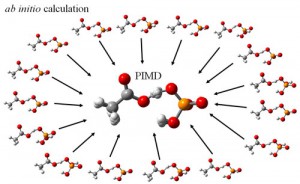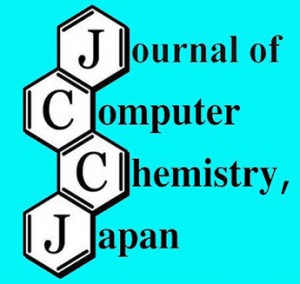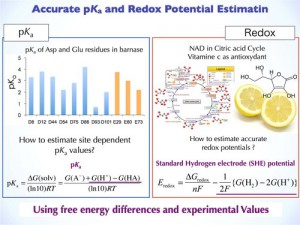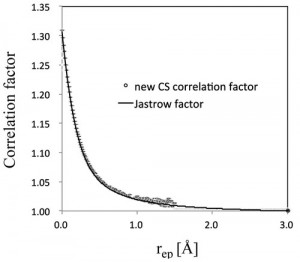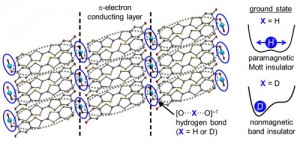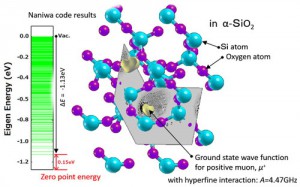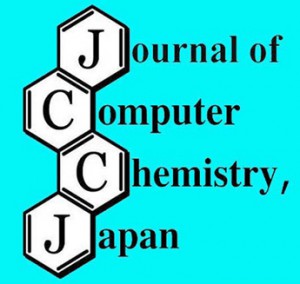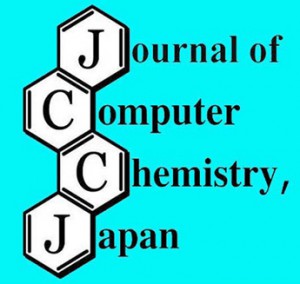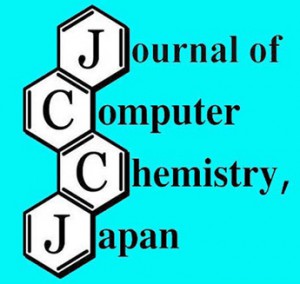[Published online Journal of Computer Chemistry, Japan Vol.15, 203-209, by J-STAGE]
<Title:> 酢酸−リン酸アニオンクラスターの分子間水素結合における核の量子揺らぎの効果に関する理論的研究
<Author(s):> 川島 雪生, 澤田 啓介, 中嶋 隆人, 立川 仁典
<Corresponding author E-Mill:> yukio.kawashima(at)riken.jp
<Abstract:> High Performance Computerで効率の高いシミュレーションを実行できる,分子科学計算ソフトウェアNTChemと経路積分分子動力学(PIMD)法を統合した階層的 並列プログラムプラットフォームを用いることにより,低障壁水素結合(LBHB)の存在が示唆されているperiplasmic phosphate binding protein (PPBP)のモデル分子である酢酸−リン酸アニオンクラスターの分子間水素結合における原子核の量子揺らぎの効果を明らかにした.モデル分子における一 つの水素結合を形成する配置を解析したところ,原子核を古典的な質点で取り扱った古典シミュレーションでは,プロトンは水素結合の両端に局在化 し,通常の水素結合と同様の振る舞いを示した.一方,原子核の量子揺らぎの効果を取り込んだ量子シミュレーションでは,プロトンが水素結合の中央 に存在する確率が高くなった.酢酸−リン酸アニオンクラスターの分子間水素結合は,LBHBと同じような傾向を示した.
<Keywords:> Low barrier hydrogen bond (LBHB), First principles calculation, Nuclear quantum effect, Path integral molecular dynamics (PIMD) simulation, Periplasmic phosphate binding protein (PPBP)
<URL:> https://www.jstage.jst.go.jp/article/jccj/15/5/15_2016-0043/_article/-char/ja/
<Title:> 酢酸−リン酸アニオンクラスターの分子間水素結合における核の量子揺らぎの効果に関する理論的研究
<Author(s):> 川島 雪生, 澤田 啓介, 中嶋 隆人, 立川 仁典
<Corresponding author E-Mill:> yukio.kawashima(at)riken.jp
<Abstract:> High Performance Computerで効率の高いシミュレーションを実行できる,分子科学計算ソフトウェアNTChemと経路積分分子動力学(PIMD)法を統合した階層的 並列プログラムプラットフォームを用いることにより,低障壁水素結合(LBHB)の存在が示唆されているperiplasmic phosphate binding protein (PPBP)のモデル分子である酢酸−リン酸アニオンクラスターの分子間水素結合における原子核の量子揺らぎの効果を明らかにした.モデル分子における一 つの水素結合を形成する配置を解析したところ,原子核を古典的な質点で取り扱った古典シミュレーションでは,プロトンは水素結合の両端に局在化 し,通常の水素結合と同様の振る舞いを示した.一方,原子核の量子揺らぎの効果を取り込んだ量子シミュレーションでは,プロトンが水素結合の中央 に存在する確率が高くなった.酢酸−リン酸アニオンクラスターの分子間水素結合は,LBHBと同じような傾向を示した.
<Keywords:> Low barrier hydrogen bond (LBHB), First principles calculation, Nuclear quantum effect, Path integral molecular dynamics (PIMD) simulation, Periplasmic phosphate binding protein (PPBP)
<URL:> https://www.jstage.jst.go.jp/article/jccj/15/5/15_2016-0043/_article/-char/ja/
